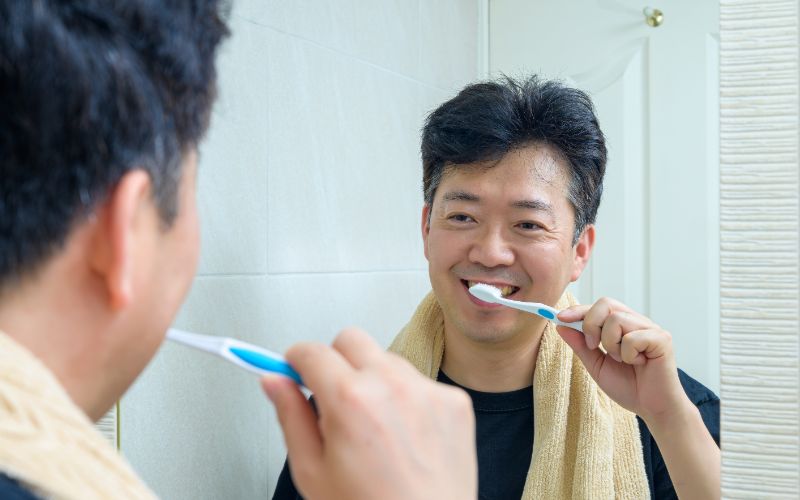
A Simple Solution to Save Your Natural Tooth in Bingham Farms, MI
When you think about dental procedures, you might picture dental fillings, dental cleanings, or even root canals. But there’s an important treatment that often flies under the radar—pulp capping. This simple yet powerful procedure can save your tooth from extensive damage and even help you avoid a root canal. At Smile Creator, experienced Bingham Farms, MI dentist, Dr. Timothy Kosinski offers advanced pulp capping treatments to preserve natural teeth and promote long-term oral health.
If you’re in Bingham Farms or nearby areas like Beverly Hills, Franklin, or Bloomfield Hills, understanding this procedure could help you make informed decisions about your dental care. Don’t hesitate to contact Dr. Kosinski today by calling 248-646-8651.
What Is Pulp Capping?
Pulp capping is a dental technique designed to protect the tooth’s pulp—a soft tissue inside your tooth that contains nerves and blood vessels. The goal is to keep the pulp alive and healthy, even after it’s been exposed due to decay or injury.
Think of pulp capping as a protective shield. When tooth decay gets too close to the pulp, or if the pulp is exposed during a cavity filling, your dentist can apply a special material to “cap” it. This helps the tooth heal naturally, reducing the risk of infection and the need for a root canal.
There are two main types of pulp capping:
- Direct Pulp Capping: Used when the pulp is exposed due to decay or trauma. A protective material is placed directly over the exposed pulp.
- Indirect Pulp Capping: Applied when decay is very close to the pulp but hasn’t exposed it yet. The dentist removes most of the decay but leaves a thin layer to avoid exposing the pulp, then covers it with a protective material.
Why Is Pulp Capping Important?
Preserving the health of your tooth’s pulp is essential. The pulp isn’t just “filler” inside your tooth—it plays a key role in keeping your tooth alive by supplying nutrients and blood flow. If the pulp becomes infected or dies, it can lead to severe pain, abscesses, and the need for more invasive procedures like root canals or even tooth extractions.

Benefits of Pulp Capping
Pulp capping offers various benefits, including:
- Prevents Root Canals: In many cases, pulp capping can save a tooth from needing a root canal.
- Preserves Natural Tooth Structure: It allows you to keep more of your natural tooth intact.
- Minimally Invasive: Compared to more aggressive treatments, pulp capping is a conservative option.
- Cost-Effective: Avoiding a root canal or extraction can save you money in the long run.
- Promotes Natural Healing: The procedure encourages the tooth to repair itself over time.
When Do You Need Pulp Capping?
Not every cavity or tooth injury requires pulp capping. It’s typically recommended when:
- You have deep tooth decay that’s near the pulp.
- The pulp is exposed during cavity preparation.
- You’ve experienced trauma that exposes the pulp.
- There are small pulp exposures without signs of infection.
Signs You Might Need Pulp Capping:
- Tooth Sensitivity: Especially to hot, cold, or sweet foods and drinks.
- Mild to Moderate Tooth Pain: Intermittent pain that isn’t severe yet.
- Visible Cavities or Damage: Deep cavities close to the tooth’s center.
If you’re experiencing any of these symptoms in Bingham Farms, Southfield, Bloomfield Township, or Birmingham or nearby areas, schedule an appointment with Dr. Kosinski at Smile Creator for an evaluation.
The Pulp Capping Procedure: What to Expect
Knowing what to expect can ease any anxiety about dental treatments. Here’s how the pulp capping process typically works:
Examination and Diagnosis
Dr. Kosinski will start by examining your tooth, taking X-rays to assess the extent of the decay or damage. This helps determine whether pulp capping is the right option.
Numbing the Area
A local anesthetic is applied to ensure you’re comfortable throughout the procedure. You shouldn’t feel any pain, just slight pressure.
Removing Decay
For indirect pulp capping, Dr. Kosinski will carefully remove most of the decay, leaving a thin layer near the pulp to avoid exposure. For direct pulp capping, the pulp will already be exposed due to decay or trauma.
Applying the Pulp Capping Material
A biocompatible material, often calcium hydroxide or mineral trioxide aggregate (MTA), is placed over the pulp. These materials promote healing and stimulate the growth of new dentin—a protective layer in your tooth.
Sealing the Tooth
The tooth is then sealed with a filling to protect it from bacteria. In some cases, a temporary filling may be placed, with a permanent filling or crown added later.
Follow-Up Care
Dr. Kosinski may schedule a follow-up appointment to monitor the tooth’s healing. Regular check-ups help ensure the pulp remains healthy over time.
To schedule your root canal retreatment appointment, contact your Bingham Farms dentist by calling 248-646-8651.
Aftercare Tips for Pulp Capping
 Taking care of your tooth after pulp capping is essential for a successful outcome. Here’s what you can do:
Taking care of your tooth after pulp capping is essential for a successful outcome. Here’s what you can do:
- Maintain Good Oral Hygiene: Brush twice a day, floss daily, and use an antibacterial mouthwash.
- Avoid Hard or Sticky Foods: This helps prevent damage to the filling.
- Manage Discomfort: Mild sensitivity is normal. Over-the-counter pain relievers can help if needed.
- Attend Follow-Up Appointments: Regular check-ups with Dr. Kosinski ensure the tooth is healing properly.
If you experience severe pain, swelling, or signs of infection, contact Smile Creator by calling 248-646-8651 immediately, especially if you’re in the Bingham Farms area or nearby communities like Farmington Hills or Royal Oak.
Potential Risks and Complications
While pulp capping is generally safe and effective, like any dental procedure, there are potential risks:
- Pulpitis: Inflammation of the pulp, which can cause pain.
- Infection: If bacteria enter the tooth, it may lead to infection.
- Treatment Failure: In some cases, the pulp may not heal as expected, and a root canal might be needed later.
However, with excellent care from Dr. Kosinski and proper aftercare, the success rate for pulp capping is high.
Pulp Capping vs. Root Canal: What’s the Difference?
While both pulp capping and root canal treatments focus on addressing issues related to the tooth’s pulp, they serve different purposes and are used in different situations.
Pulp capping is a preventive procedure designed to protect the pulp when it’s exposed or nearly exposed due to decay or injury. The goal is to keep the pulp alive, allowing the tooth to heal naturally without the need for more invasive treatment. It’s a minimally invasive process that involves placing a protective material over the pulp to encourage healing and prevent infection.
On the other hand, a root canal is necessary when the pulp has already become infected, inflamed, or has died. In this procedure, the dentist removes the damaged or infected pulp entirely, cleans and disinfects the inside of the tooth, and then fills and seals it to prevent further infection.
In short, pulp capping helps prevent infection and preserve the pulp’s health, while a root canal is used to treat an existing infection or severe damage.
Frequently Asked Questions
Does pulp capping hurt?
Pulp capping is generally not painful, as local anesthetic numbs the area around the tooth being treated. Patients may experience mild discomfort or sensitivity after the procedure, which can be managed with over-the-counter pain medication.
Can you eat after pulp capping?
After pulp capping, avoid eating or drinking anything for at least one hour to allow the anesthesia to wear off. After this time, patients can typically resume their diet, although they should avoid hard, crunchy, or sticky foods that could damage the treated tooth.
How long does pulp capping take?
The procedure can be completed in a single visit to the dentist and usually takes 30 to 60 minutes. The length of time required for pulp capping can vary depending on the extent of the damage and the number of teeth being treated.
Does insurance cover pulp capping?
Whether or not insurance covers pulp capping depends on the individual policy and the specific circumstances of the patient’s case. Some insurance policies may cover the cost of pulp capping if deemed medically necessary, while others may not cover the procedure at all. Check with your insurance provider to determine your coverage options.
Protect Your Smile with Pulp Capping at Smile Creator
Pulp capping is more than just a dental procedure—it’s a way to save your natural tooth, prevent infections, and avoid more invasive treatments. By addressing tooth damage early, you can maintain your oral health and keep your smile strong.
If you’re experiencing tooth sensitivity or discomfort, don’t wait. Contact Smile Creator by calling 248-646-8651 to schedule an appointment with Dr. Timothy Kosinski. Whether you’re in Bingham Farms or nearby areas like Southfield, Bloomfield Hills, or Beverly Hills, quality care is just a call away.
